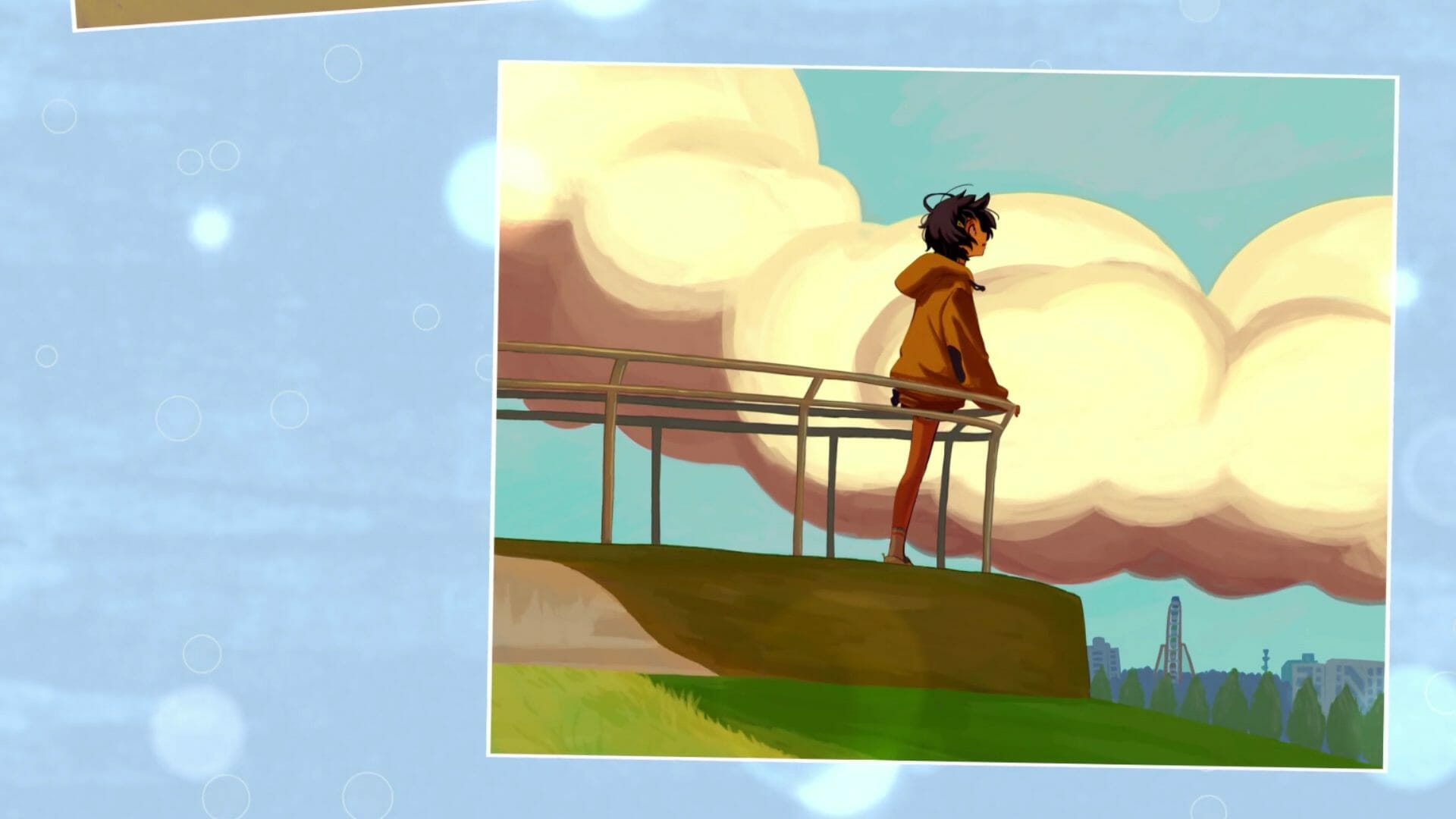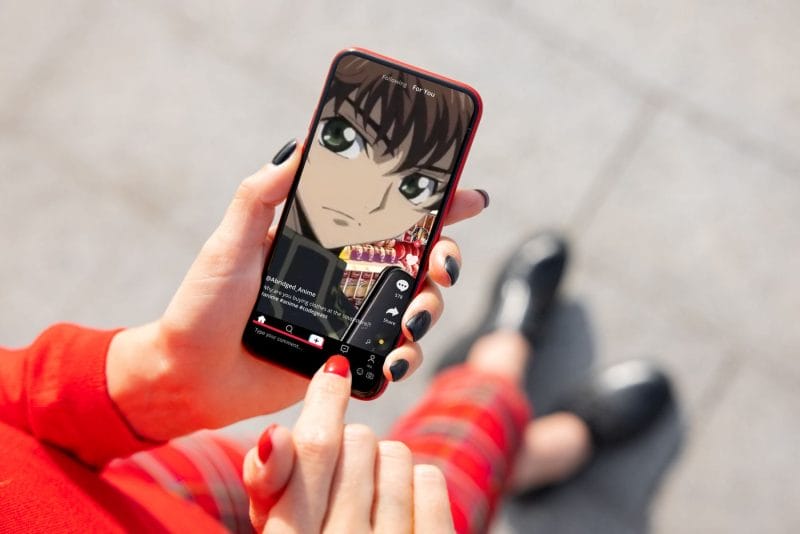Wonder Egg Priority’s strengths are numerous, from its incredible production quality to its dedication to delivering a vision unlike anything seen in anime before. Whether depicting jaw-dropping magical fight scenes or quiet personal moments, the series shines. Helmed by TV drama screenwriter Shinji Nojima and director Shin Wakabayashi, as well as an eclectic mix of new and veteran animators working under A1 Pictures offshoot Cloverworks, the sheer amount of creativity on display is admirable in its own right.
However, while the beautiful animation and staggering ambition of the series cannot be understated, the truly most impactful thing about Wonder Egg is the sobering honesty with which the series deals with trauma. Experiencing this series as someone who suffers from medically diagnosed depression and anxiety, I can speak to the impact of the series’ nuance and empathy, even when it may sometimes become uncomfortable to watch.
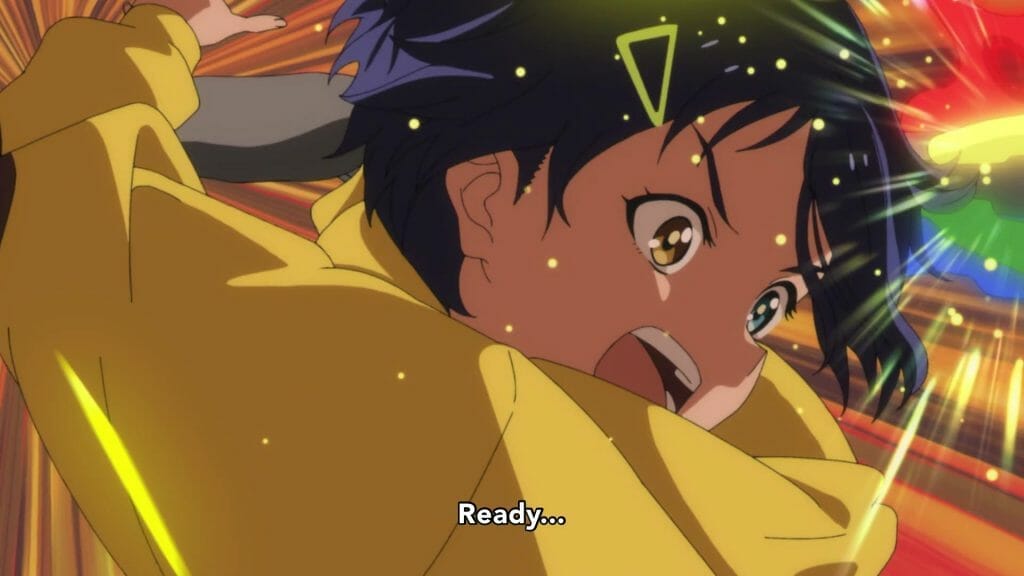
Wonder Egg Priority is primarily about four teenage girls fighting in an alternate reality to try and revive their loved ones who comitted suicide. After purchasing a mysterious Wonder Egg, they are transported to a dreamlike world where they are tasked with protecting “captured maidens” – the spirits of other young people who have taken their own lives. The protagonists provide comfort and closure to their wards, and often, through this process, end up facing their own traumas along the way.
How the animation helps to deliver its message, the expertise of the staff, and arduous production cycle have been discussed at length in places such as the Sakugabooru Blog. Although its production issues have created pacing issues, largely the fault of a sudden recap episode and a significantly delayed finale, the impact of Wonder Egg’s thematic focus on trauma cannot be understated.
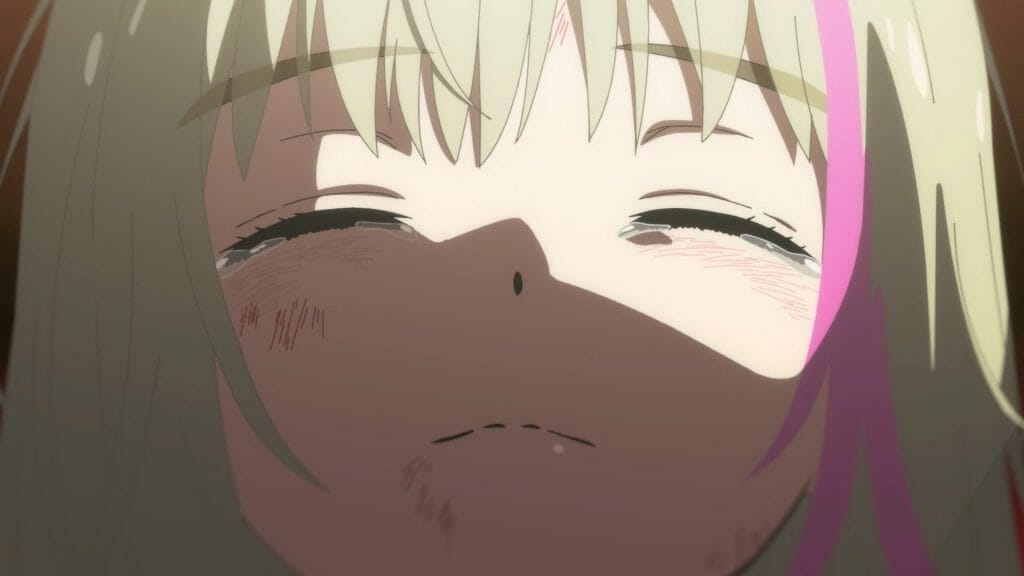
Many anime have dealt with the struggle of overcoming traumatic real life situations, across genres: in slice of life drama (for example, Welcome to the NHK), in magical girls (for example Revolutionary Girl Utena or FLIP FLAPPERS) and even mecha (Evangelion). Wonder Egg Priority takes influence from what has come before, and dives headfirst into an unflinching look at the impact of grief and abuse.
Wonder Egg Priority is often uncomfortable to watch. Although the dreamworlds and the monsters they contain are highly symbolic and metaphorical, the issues that they represent—child abuse, sexual violence, toxic body standards—are still front and center. The series’ unflinching nature can make it hard to sit through, especially as a viewer who deals with similar trauma to several of its characters. I see a lot of unpleasant things about myself in them, and I see a lot of my problems represented on screen. Though most importantly, I feel as if my problems are understood.
The problems that the characters face are represented in the dream world as Wonder Killers. These are physical manifestations of the trauma these youths face, usually a monstrous transformation of an abusive adult in their lives, whether that be a physically abusive teacher or even a cult leader who misled a youth into giving their own lives to escape from their troubles. There’s something gratifying about seeing these young people work through their issues in such a bombastic fashion, and in a general sense it’s simply validating to see these internal issues be assigned physical importance on such a large scale.
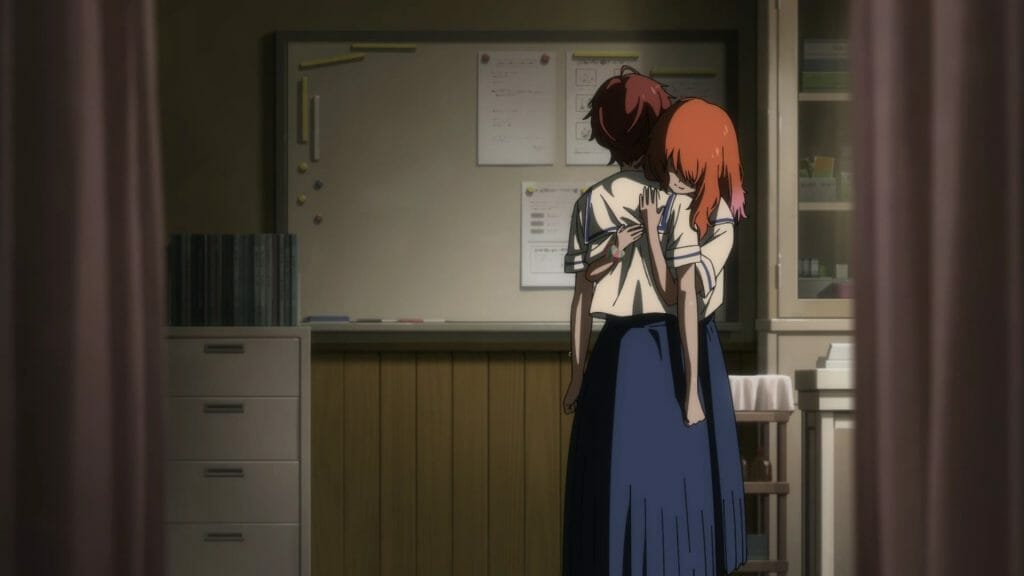
The creative flair of Wonder Egg Priority is reminiscent of the works of Revolutionary Girl Utena director Kunihiko Ikuhara. The surreal action packed dreamscapes conjure up feelings of the stage show atmosphere that all of Ikuhara’s works share. Similarly, the slice-of-life scenes that focus on creating believable real world environments, can often resemble the works of K-On! Director Naoko Yamada. Particularly in how they capture natural lighting, detailed environments, and the weight of movement.
There’s a duality to how the series depicts trauma. We see it manifest in these surreal dreamworlds packed with Ikuhara style metaphors for the trauma that each character faces, yet at the same time we also get a natural Yamada inspired setting to ground the series in reality. Whether it be Ai’s reluctance to go to school, Neiru’s detachment to the world around her, Rika’s struggle with self harming, or Momoe’s struggle to find acceptance as a girl, the cast’s problems are believable and the way their anxiety manifests is deeply relatable to my own struggles.
It does not shy away from complex and contemporary issues, such as Kaoru’s gender dysphoria and Rika contending with the destructive consequences of a parasocial idol and fan relationship. Being non binary myself, and having trans friends from all over the spectrum, Kaoru’s trauma was particularly impactful to me. Kaoru is shown to be a kind and compassionate person, and yet his gender identity means that he is inherently hated. Though their experiences are different, Momoe relates to his struggle in that she wants to be appreciated as a girl despite her decision to not follow gender norms. Kaoru might already be a ghost when we meet him, but his presence in the series, and the empathy with which Momoe protects him, make him a hugely resonant and valuable character.
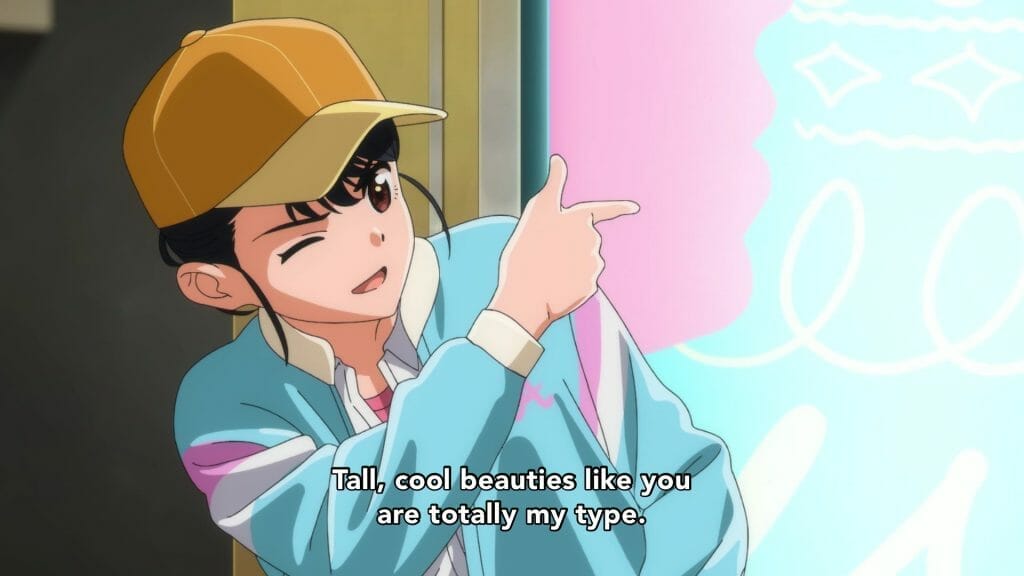
The experience of dealing with trauma is also not softened to relate it to more conventional, easy-to-digest struggles. The full experience is shared to the viewer, even the aspects that can make a character unlikeable. We see the scars that Rika gets from self-harming. But unlike the more kind and compassionate Kaoru whose self-loathing comes largely from the cruelty of others, Rika herself can be unnecessarily cruel towards others. As an idol, Rika notices her fan, Chiemi, shoplifting to get into her handshake events. Rika doesn’t dissolve the toxic relationship logically, but instead chooses to berate and body shame Chiemi to a point where she goes home and starves herself to death.
These moments are uncomfortable, but add believability. The main cast are only 14 years old, and the series understands that their young age means they will inevitably make harmfully bad decisions while trying to work through their trauma. While I’ve never done something quite that destructive, I regret how I worked through my frustrations as a teenager. Much like Shoya in Yoshitoki Oima’s manga A Silent Voice, I found gratification in seeing a deeply flawed youth be allowed to make mistakes and then make things right.
Dealing with mental illness is also rarely a straight path. Sometimes there are big steps, though most of the time you have to accept smaller steps. Most scarily, you may even face setbacks which can undo your mental progress.
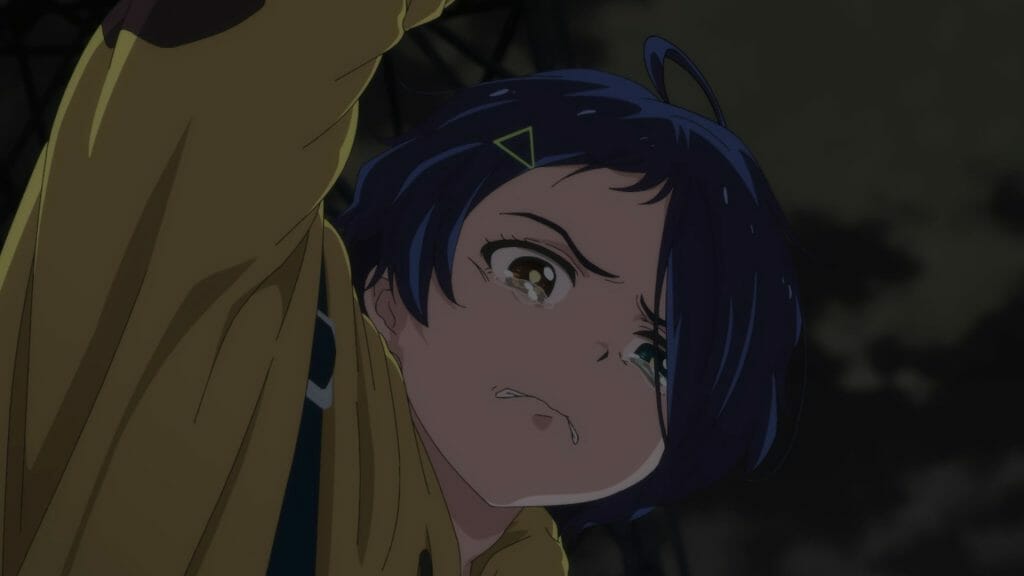
It is that complexity and ambition which makes the series so endearing to me. The toxic consequences of trauma are laid bare, and the twists and turns on the path to recovery that these characters walk adhere less to predictable storytelling conventions than they do to the real life struggles of recovering from these forms of mental anguish.
Towards the end of the series, Momoe and Rika reach a crucial point in their development, only to be engulfed in despair by yet more traumatic experiences. These events by themselves—which may have seemed to some viewers like a sudden, nasty plot twist—are reflective of how the cruelty of the world can reignite your trauma even when it feels like progress is being made. Overcoming trauma is not a straight journey from A to B, but a confusing and difficult process where all we can do is try our best and hope for a positive outcome.
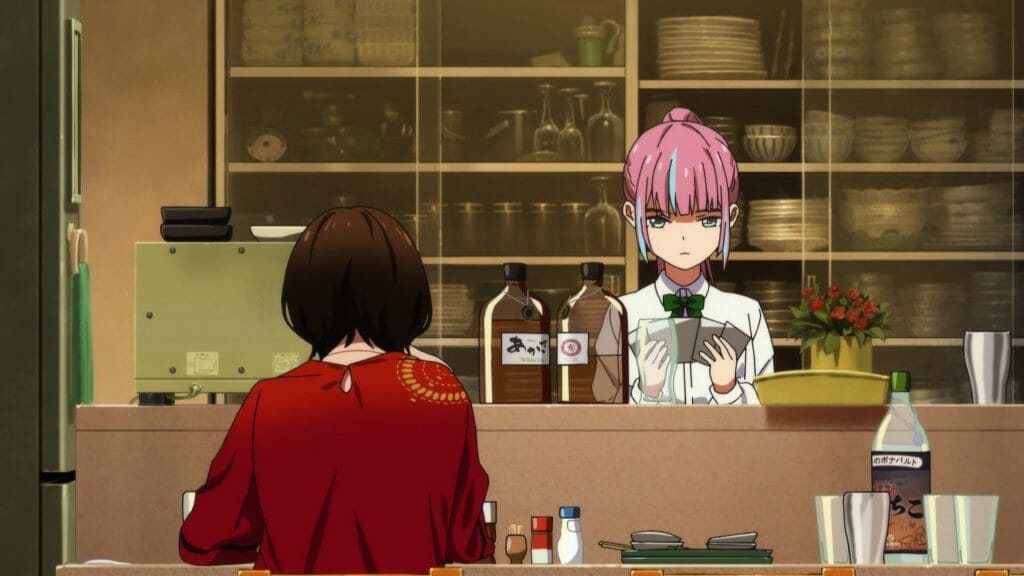
Wonder Egg Priority understands these mental health issues to an uncomfortably accurate degree, but it’s more than just a character study of what goes on in its heroines’ heads. These girls are actively finding ways to live with their trauma and bond with each other. Not only through their fights with the Wonder Killers, but in the moments where we see the lighter side of their lives. They talk about boys, their school lives, and even halt a mission in the dream world to bowl and play arcade games.
We get a full picture of who these girls are from these scenes. We see all their trauma, regardless of how sympathetic it makes us to their struggle, but we also see the happiness that this friendship has brought to their lives. Ai is even faced with the possibility of a world where her struggle with trauma fails, and she takes her own life. Overcoming these intrusive thoughts have been a crucial part of working through my own trauma, so it was gratifying to see Ai overcoming a physical manifestation of that to demonstrate how far she had come.
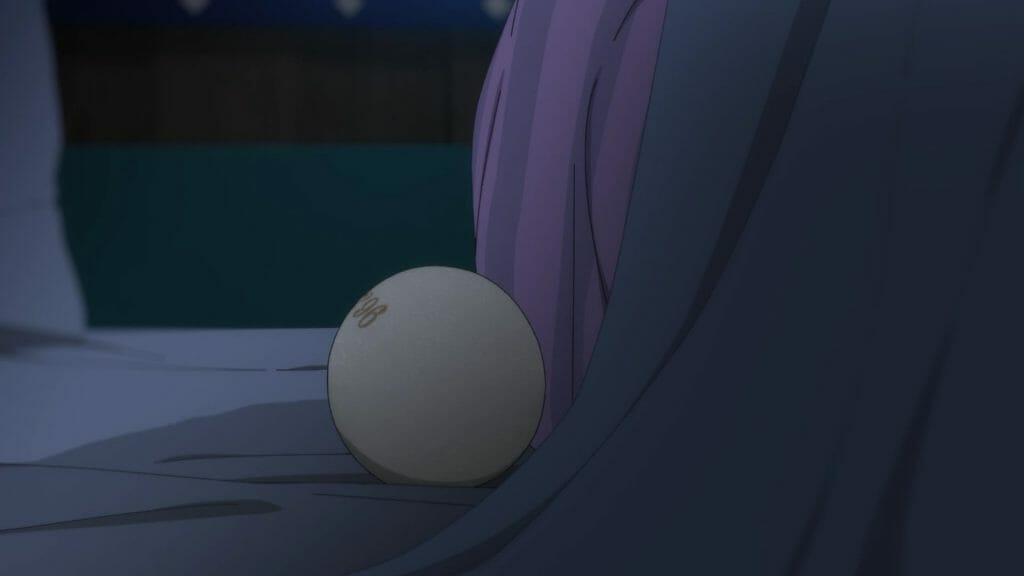
At the time of writing, Wonder Egg’s story is yet to be completed. A variety of production woes have pushed the true final episode to the end of June, hopefully allowing the animation staff ample time to rest. I feel a lot of nervous energy inside me while waiting for that finale. However, that speaks to how much good the series has achieved up until now. Wonder Egg Priority is strongly dedicated to telling its full story, an exploration of trauma that I find deeply comforting and relatable to my own struggles.
No matter how it ends, Wonder Egg Priority remains a groundbreaking anime for its methods of exploring mental illness alone. In a medium where I usually settle for Gurren Lagann type shows where gaining catharsis means witnessing its characters power through trauma, it’s refreshing to see a series that empathises with my struggles, regardless of how relatable a general audience may find it. No anime have spoken to me the way that Wonder Egg has. As a non binary person, as someone who has faced setbacks and regrets while dealing with trauma, and as someone who fights intrusive thoughts of how things could be if I took the wrong path.
Wonder Egg Priority’s exploration of trauma is a triumph. As crucial as the ending will be, nothing can cheapen the impact it has had on me. If nothing else, I hope it can encourage other anime to explore these uncomfortable topics with similar empathy.


